Bhutan Things to Do
Did you know Bhutan measures success by Gross National Happiness, not just money? This shows Bhutan’s dedication to keeping its culture, environment, and spiritual values alive. In this guide, we invite you to see Bhutan, where old traditions meet breathtaking nature in the Himalayas.
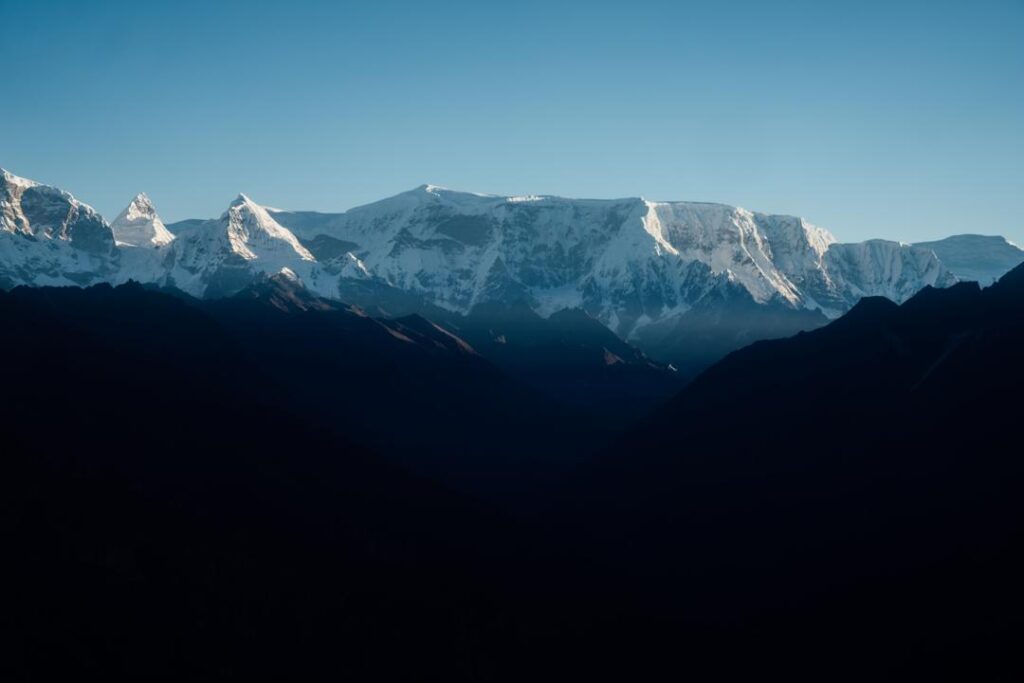
Start your Bhutan trip by visiting famous spots like Paro Taktsang, or Tiger’s Nest, and the huge Buddha Dordenma statue in Thimphu. See the calm of Punakha’s Dzong and the beauty of Dochula Pass with its 108 chortens.
Next, we’ll visit the Penis Village of Sopsokha, famous for Chimi Lhakhang, the Birth Temple. Try Bhutanese food like chili cheese and dried meat, and learn about the Takin, Bhutan’s national animal.
This guide is your key to finding Bhutan’s mix of old and new. It’s a place for spiritual growth and exciting adventures. So, get your bags ready for an amazing journey in the Land of Happiness.
Introduction to Bhutan: The Land of Happiness
The Kingdom of Bhutan is nestled in the eastern Himalayas. It is a beacon of tranquility and tradition. Known for its serene landscapes and vibrant festivals, Bhutan offers a journey into an ancient realm.
In this realm, harmony and happiness are cherished above all. It’s a place where peace and culture meet.
Brief History
The history of Bhutan is deeply intertwined with its Buddhist heritage and monarchy. The foundation of Bhutan’s identity was laid in the 17th century by Zhabdrung Ngawang Namgyal. He unified the region and established the dual system of governance.
Through the centuries, the Kingdom of Bhutan has preserved its sovereignty and rich tapestry of cultural traditions. It remains one of the few uncolonized nations globally.
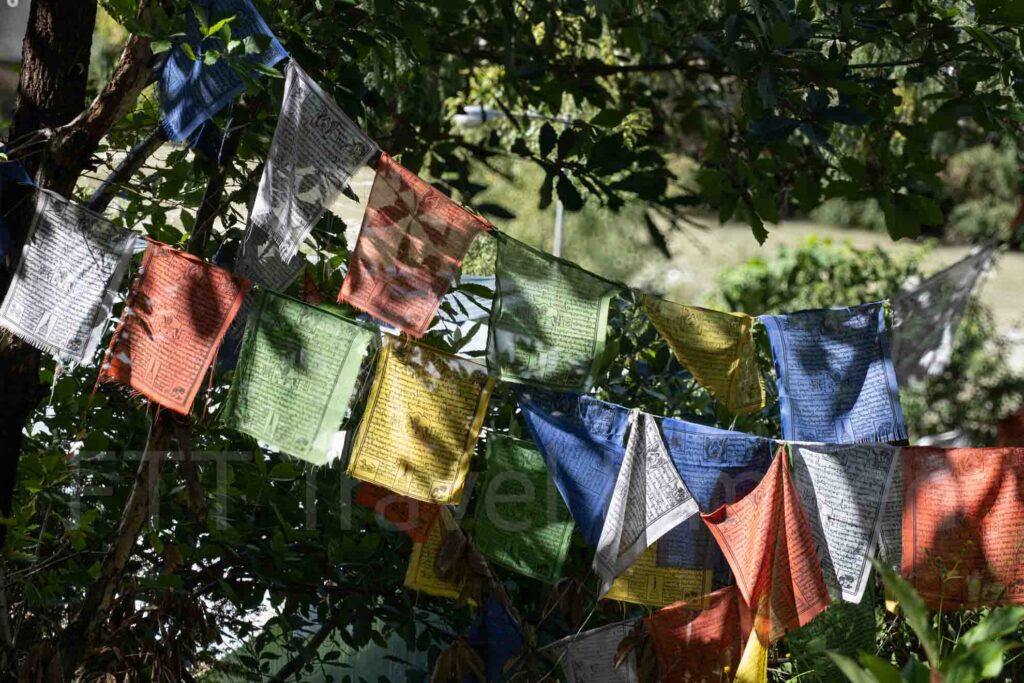
Geography and Culture
Bhutan’s geography is diverse, ranging from subtropical plains in the south to rugged, snow-capped peaks in the north. These variations contribute to the distinctiveness of Bhutanese culture.
The culture is characterized by traditional architecture, intricate crafts, and lively festivals. It’s a unique blend of nature and tradition.
A unique aspect of Bhutan is its philosophy of Gross National Happiness (GNH). It prioritizes the well-being of its citizens over material wealth. This guiding principle influences all facets of Bhutanese life.
It fosters a resilient and contented society. This concept has become a global reference for governance. It solidifies Bhutan’s reputation as the land of happiness.
Discovering Paro: The Gateway to Bhutan
Paro is more than just a starting point for travelers. It’s a treasure trove of Bhutan’s culture and history. The beautiful Paro Valley welcomes visitors with its calm landscapes and amazing buildings.
Paro Taktsang (Tiger’s Nest)
Visiting Paro Taktsang, or the Tiger’s Nest, is a highlight. This monastery is built on a cliff, offering stunning views. The hike there is a journey through green forests and nature, showing the beauty of Paro.
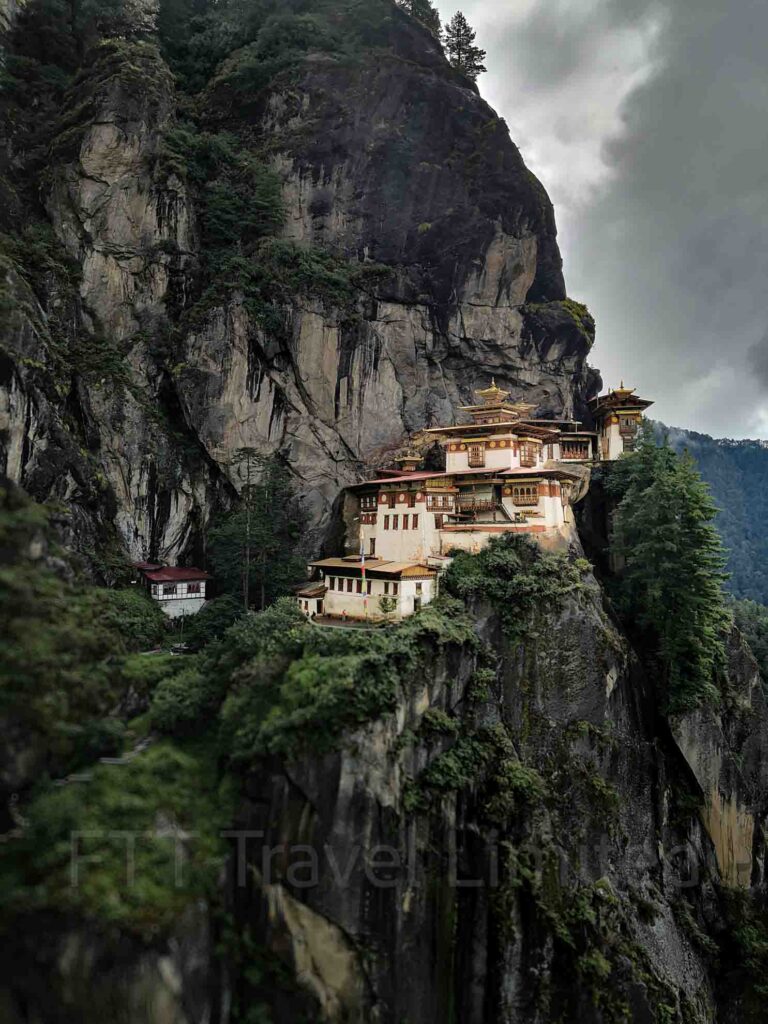
Rinpung Dzong
The Rinpung Dzong fortress is another must-see. It’s a beautiful example of Bhutanese architecture. This fortress has seen many years, standing strong over the valley. Visitors can see its detailed woodwork and enjoy its festivals, learning more about Paro’s culture.
Exploring Thimphu: Bhutan’s Capital City
Dive into the lively culture and breathtaking views of Thimphu, the lively Bhutanese capital. This city, set in the Himalayas, mixes old traditions with new attractions perfectly.
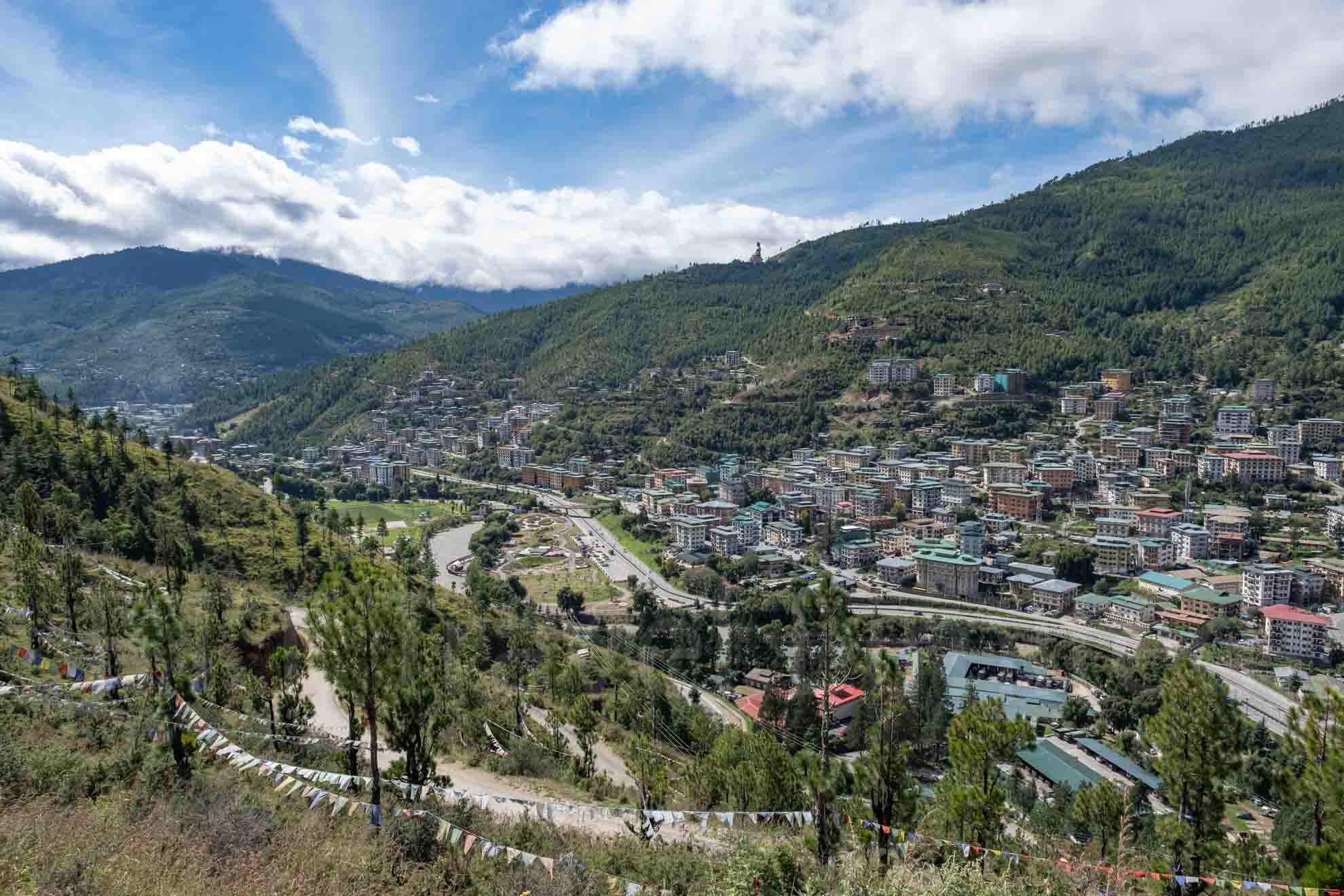
Buddha Dordenma Statue
The Buddha Dordenma Statue is a must-see in Thimphu. It stands at 169 feet, showing off its beauty and importance. Inside, over 125,000 smaller Buddhas add to its grandeur, making it a key stop on any Thimphu tour.
Tashichho Dzong
The Tashichho Dzong fortress is another key spot in Thimphu. Since the 13th century, it has been a center of Bhutan’s government and religion. Walking through its halls and gardens, you’ll understand more about Bhutan’s history and culture.
Thimphu is a journey through Bhutan’s traditions, from the calm Buddha Dordenma to the historic Tashichho Dzong.
The Serenity of Punakha
The Punakha valley is in the heart of Bhutan, offering a calm that draws in all who visit. Once the capital, it’s a mix of natural beauty and spiritual depth. Here, the stunning views and rich culture fill your senses, bringing a sense of peace.
Punakha Dzong
Punakha Dzong sits where the Pho Chhu and Mo Chhu rivers meet. It’s known as the “Palace of Great Happiness.” Its beauty comes from its detailed design and deep spiritual meaning in Bhutan.
This ancient fortress has been key in Bhutan’s history. It’s the winter home of the central monastic body.
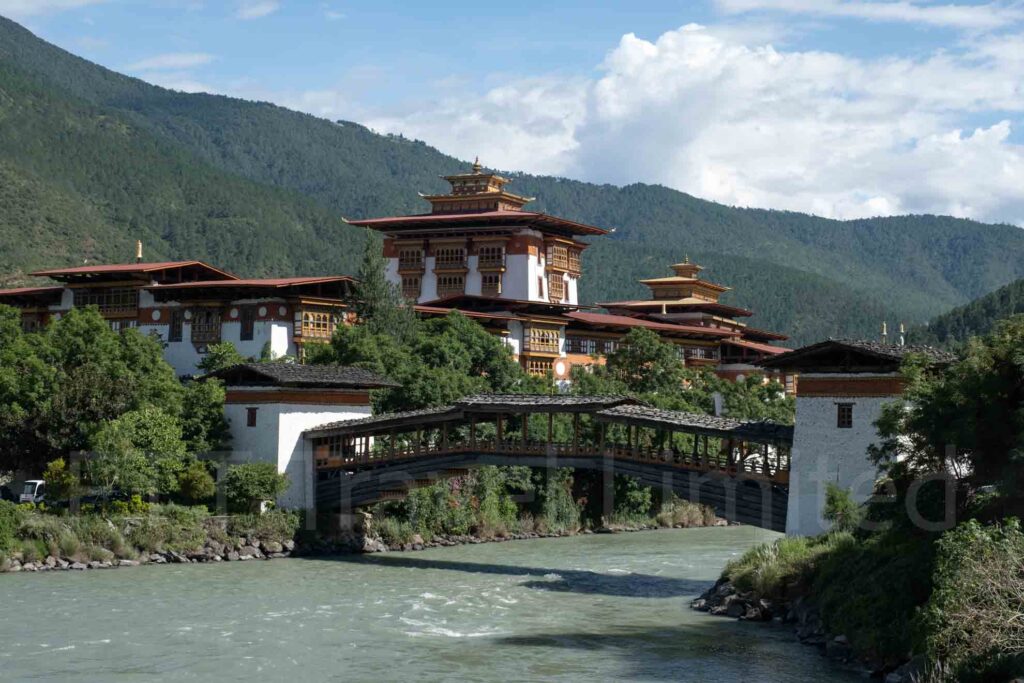
Chimi Lhakhang Temple
Chimi Lhakhang Temple is close to the main town. It’s famous for fertility blessings. Visitors come from all over for these blessings, making it a sacred place in Punakha.
The temple’s stories are linked to the “Divine Madman,” Drukpa Kunley. His legend adds mystery to this spiritual site in Bhutan.
The Scenic Dochula Pass
Experience the awe-inspiring Dochula Pass views where the Himalayas stretch out before you. Located at 3,100 meters, it’s a top Himalayan pass in Bhutan. It’s perfect for those who love the beauty of nature.
The Dochula Pass is more than a view spot. It has 108 chortens, or stupas, on its slopes. These chortens show off Bhutan’s skill in craftsmanship and spiritual commitment. They symbolize peace and Bhutan’s love for nature and spirituality.
Traveling through scenic routes Bhutan offers, Dochula is a key spot to see Bhutan’s beauty. The mountains around it are a paradise for nature fans and hikers. The trails here mix the beauty of nature with Bhutan’s culture.
For both seasoned travelers and curious explorers, the Dochula Pass views are unforgettable. This place combines culture, natural beauty, and calm. From the Dochula mountains to the peaceful chortens, it’s a unique mix of beauty and peace.
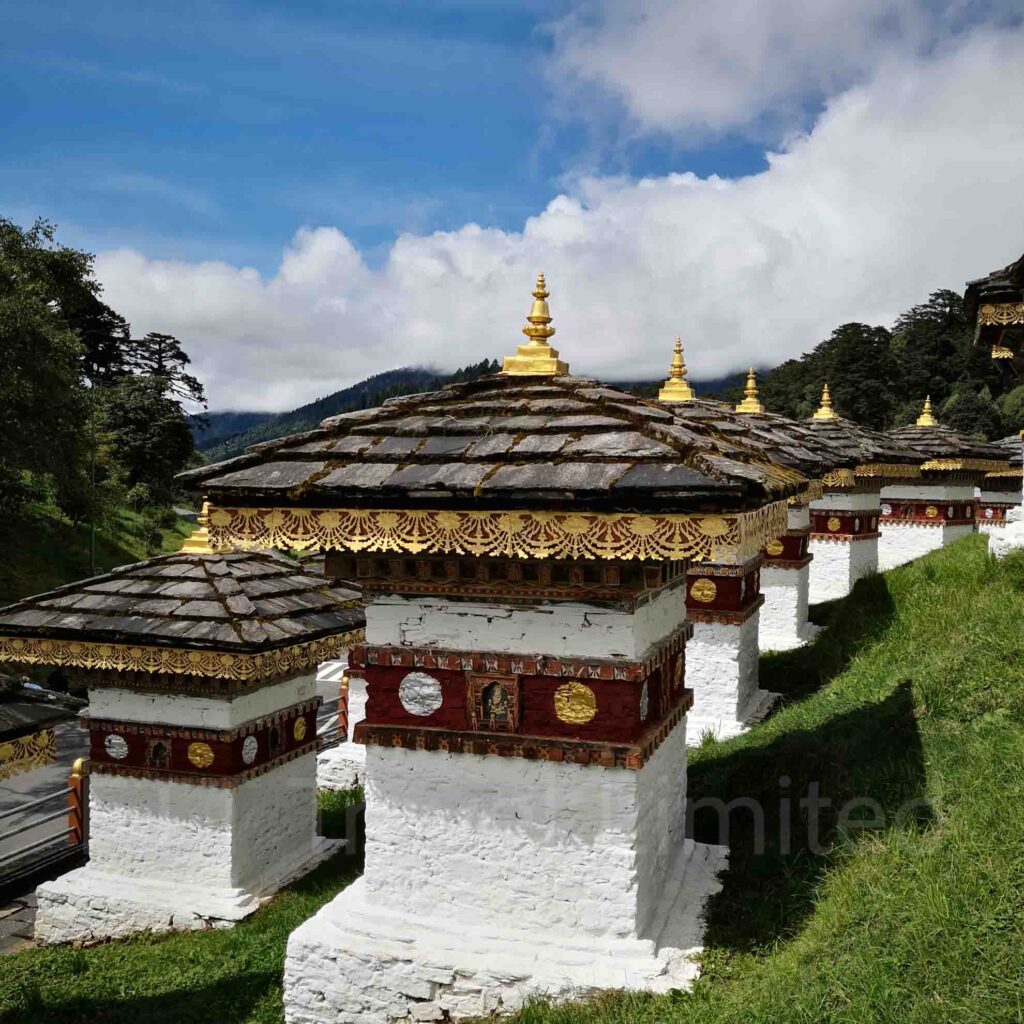
Unveiling the Mysteries of the 108 Pagodas
In the Himalayas, the 108 Druk Wangyal Chortens at Dochula Pass are stunning. They honor the bravery and sacrifice of Bhutanese soldiers. These Dochula Pass landmarks are not just beautiful; they are spiritual symbols in the Bhutanese landscape.
Walking through this area, you’ll see the Bhutanese pagodas. Each one tells a special story, adding to the site’s mystique. Built in Buddhist architecture style, they reveal Bhutan’s spiritual depth.
Known as chortens, these pagodas symbolize Buddhism’s deep spiritual symbols. They stand tall at Dochula Pass, not just as relics but as places of peace. The 108 Druk Wangyal Chortens are essential for anyone wanting to feel Bhutan’s spirit.
A Glimpse into Bhutanese Cuisine
Bhutan’s food scene is a mix of flavors, textures, and ingredients. It shows the country’s rich heritage and lively culture. From the spicy Ema Datshi to the tasty dried meats, Bhutanese food is full of surprises.
Traditional Dishes
Bhutanese dishes use fresh, local ingredients for bold flavors. Rice is key, often with spicy veggies, meats, or cheese sauce. This focus on natural ingredients makes Bhutanese meals both tasty and healthy.
The Famous Chili Cheese
You can’t talk about Bhutanese food without Ema Datshi. Known as Bhutan’s national dish, it’s a spicy mix of green chilies and cheese. Trying Ema Datshi is a must for experiencing Bhutan’s bold flavors.
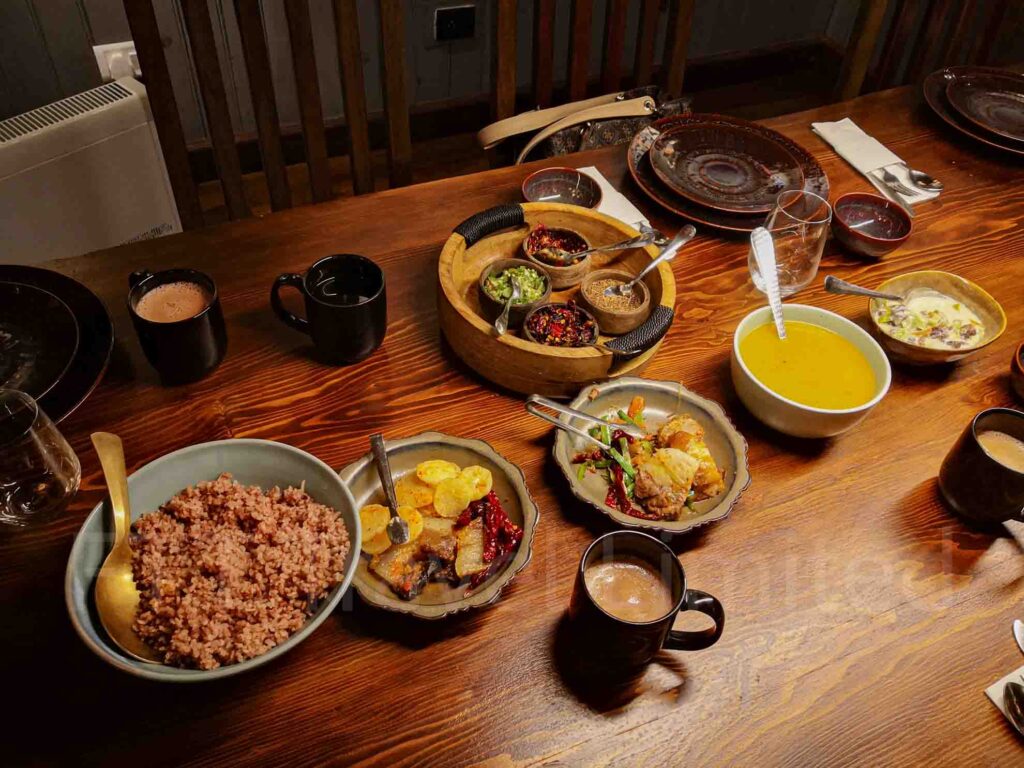
Dried Meat Specialties
Dried meats in Bhutan show the country’s clever preservation methods. Meats are dried and seasoned, adding a rich taste to the diet. These dishes highlight Bhutan’s food culture and are a treat for the taste buds.
A Visit to Sopsokha: The Penis Village
Sopsokha village is in Bhutan’s beautiful countryside. It’s known as the “Penis Village.” Here, tradition and folklore blend, making it a must-see for those interested in Bhutanese culture.
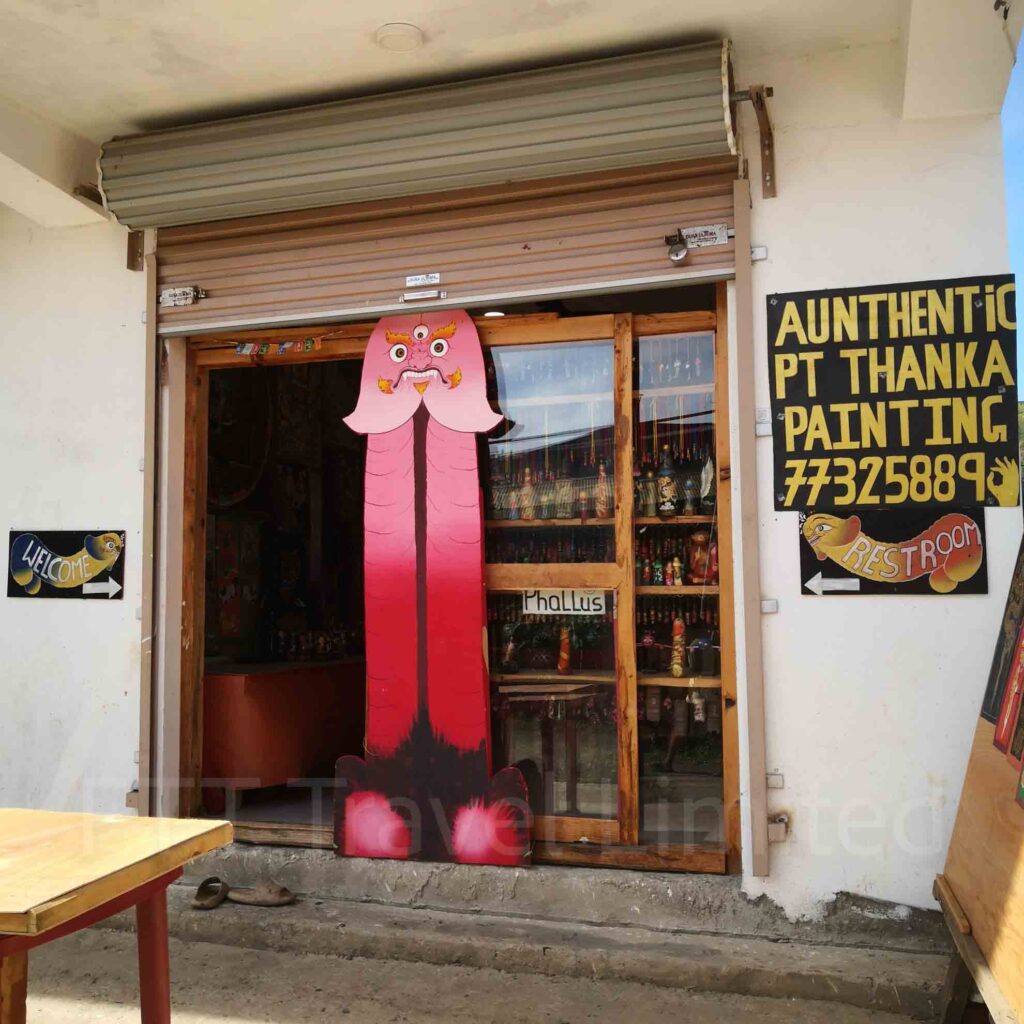
Fertility Symbolism
Sopsokha is famous for its phallus paintings and sculptures. These Bhutanese fertility symbols are on houses and walls. They’re thought to ward off evil and bring good fortune and fertility.
This tradition shows the strong beliefs in Bhutanese folklore. Phallic images are seen as symbols of life and creation.
Local Legends
The start of these customs comes from local legends and Lama Drukpa Kunley’s teachings. This saint was known for his unique ways of teaching. He used humor and bold actions.
According to Sopsokha traditions, he used phallic symbols to protect and bless people. Visitors to Sopsokha will hear stories and learn about its rich cultural heritage.
Chimi Lhakhang: The Temple for Birth
The Chimi Lhakhang pilgrimage is a must-see for anyone visiting Bhutan. This famous fertility temple is a haven for couples seeking blessings. It showcases Bhutan’s deep spiritual beliefs, attracting visitors from around the world.
Inside the temple, people hope to find Bhutan blessings for fertility and family growth. The journey to Chimi Lhakhang is more than just a visit. It’s a chance to connect with Bhutan’s spiritual and cultural roots. The calm atmosphere and friendly locals make it unforgettable.
Chimi Lhakhang sits in the stunning Punakha Valley, surrounded by greenery. It’s a peaceful spot for those on a spiritual journey. The temple’s divine connection and historical role in Bhutanese fertility temple rituals show Bhutan’s unique blend of faith and culture.
Chimi Lhakhang is often part of a trip that includes other famous spots like Taktsang (Tiger’s Nest) and the Buddha Dordenma statue. This way, visitors get to see all of Bhutan’s sacred, scenic, and cultural wonders.
Get to Know Bhutan’s National Animal: The Takin
The Bhutan Takin is a rare and special mammal to the Bhutanese. It looks like a mix of goats and antelopes. If you want to see these amazing animals, visit the Motithang Takin Preserve in Thimphu.
The Motithang Takin Preserve was once a zoo. Now, takins live freely in a space that feels like home. This shows Bhutan’s strong commitment to Bhutan conservation and protecting its wildlife. Here, you can watch the takins eat and learn about their importance in Bhutan’s ecosystem.
Bhutan works hard to protect its Takin wildlife and nature. As you explore, you’ll see the beauty of Dochula Pass, the 108 Pagodas, Punakha Dzong, and Paro Taktsang. These sights show Bhutan’s effort to keep its natural wonders safe for the future.
Discovering the Bhutan Takin teaches you about Bhutan’s deep connection with nature. When you walk through the Motithang Takin Preserve, think about this amazing animal’s role in Bhutan’s beauty.
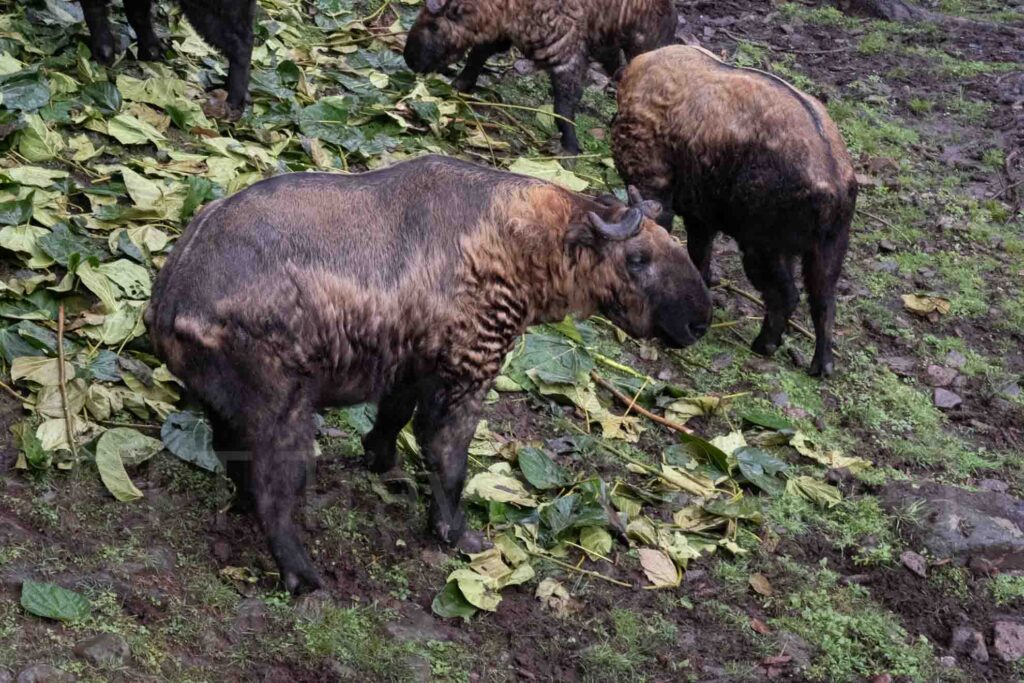
Bhutan Sightseeing: Paro, Thimphu, Punakha, Tiger’s Nest, Dzong
Start an unforgettable journey through Bhutan’s serene landscapes and rich culture. Begin in Paro, the entrance to Bhutan. Here, you’ll see the Tiger’s Nest, a cliffside monastery with stunning views. It’s a spiritual experience you won’t forget.
Then, head to Thimphu, Bhutan’s lively capital. See the massive Buddha Dordenma Statue, a symbol of the city’s mix of spirituality and modern life. The Tashichho Dzong is a government and monastic center, showing Bhutan’s unique blend of religion and governance.
Next, visit Punakha, with its stunning Punakha Dzong. This Dzong is a masterpiece of architecture, set in a beautiful valley. Don’t miss Chimi Lhakhang Temple, famous for fertility blessings, during your Punakha trip.
This Bhutan Sightseeing guide takes you from the Tiger’s Nest to the grand Dzongs. Each place offers a unique part of Bhutan’s culture. Together, they make for a rich and rewarding travel experience.